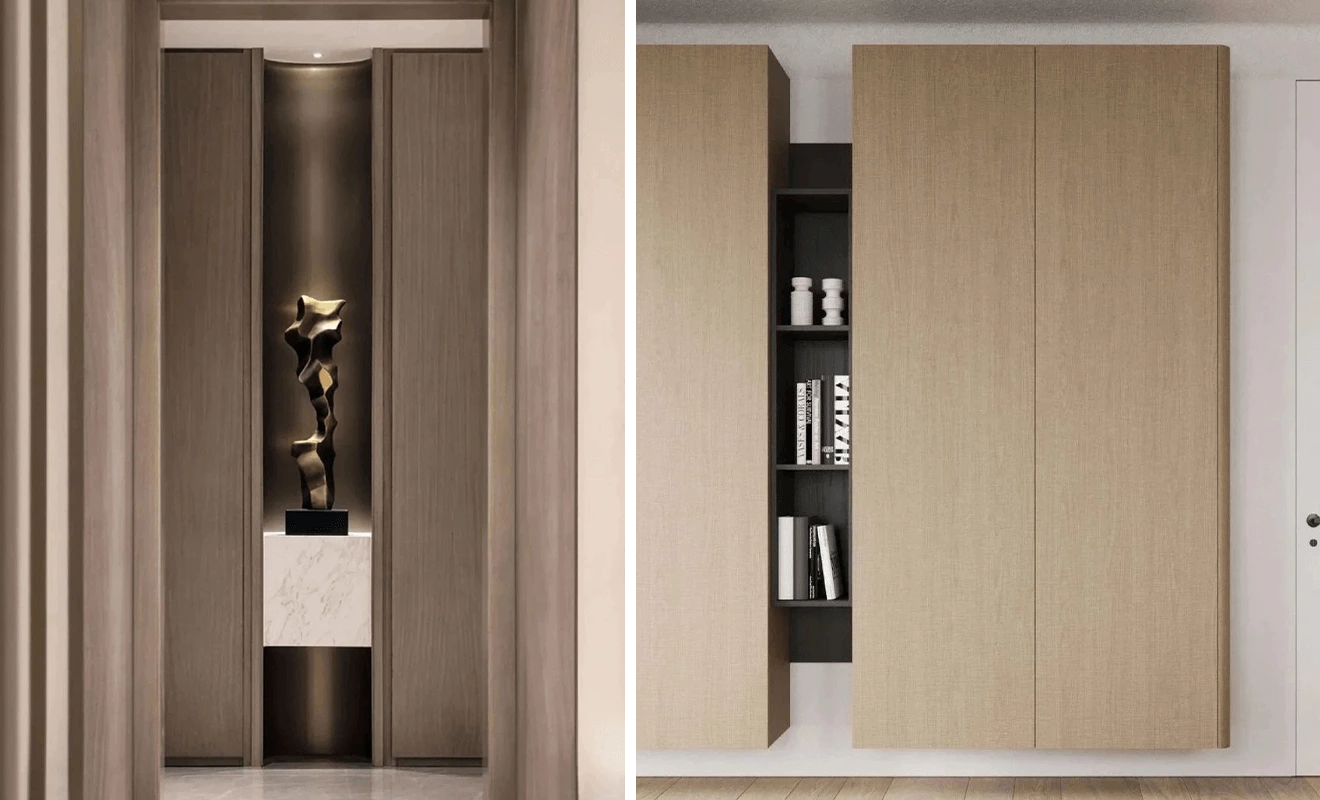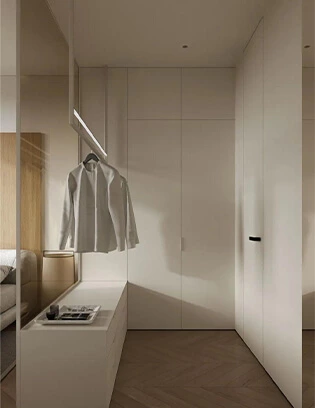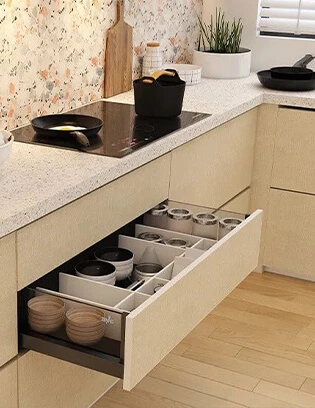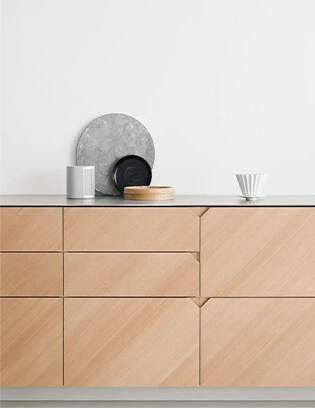7 Specialized Techniques to Characterize High-end Cabinets
The value of high-end custom cabinets goes beyond high-quality materials — it lies in the excellent craftsmanship. These detailed touches highlight the artistic beauty of custom design, having every inch of space tell a unique life story. Here are 7 specialized techniques that characterize high-end custom cabinets:
Recessed Joint Technique
The recessed joint technique involves creating a concave gap between two materials to seamlessly transition between them. This approach helps prevent unsightly cracks at the junction, offering a natural transition that enhances the overall aesthetic. The resulting joint adds a layer of sophistication to the space, contributing to a more complex and refined visual experience.
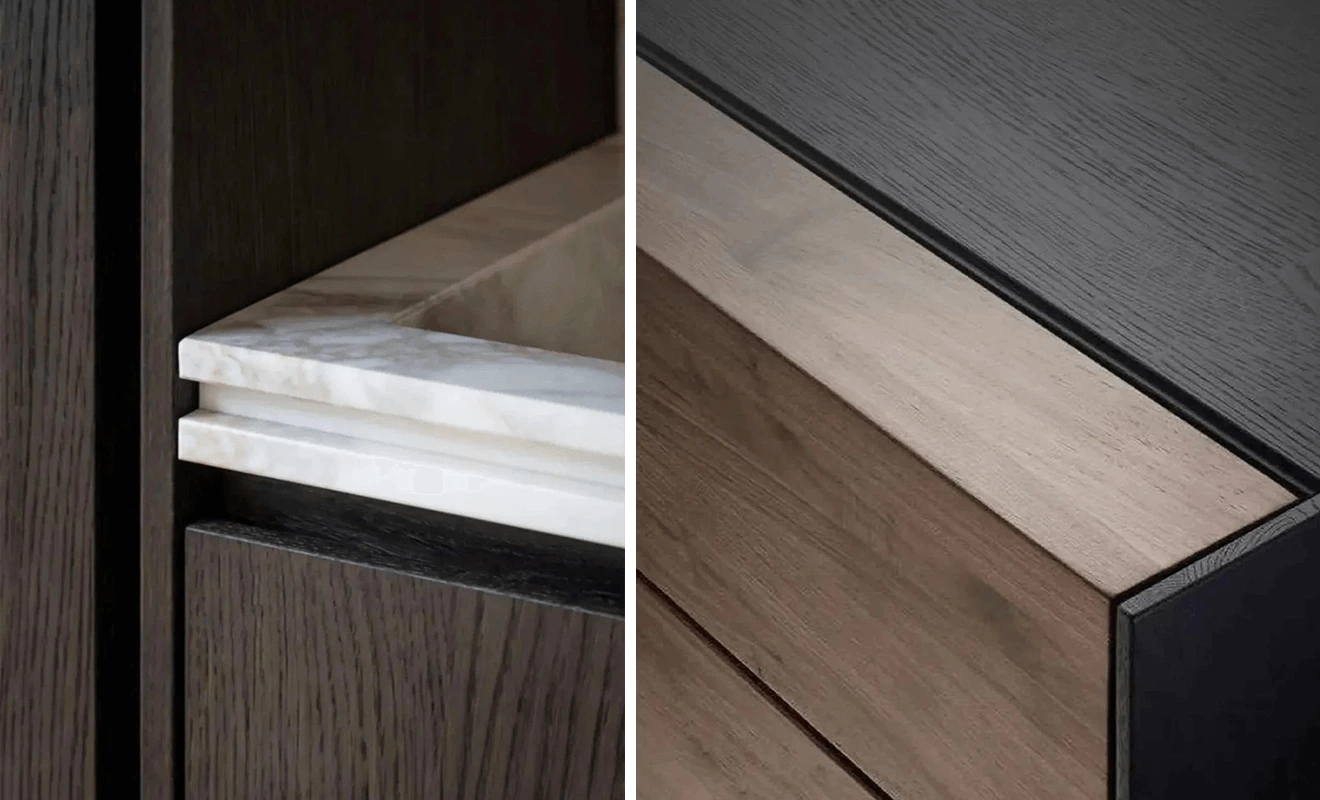
Skeletal Framework Technique
The skeletal framework technique serves as a structural guide, defining and regulating the boundaries of cabinet units. It is a method of spatial segmentation, providing a framework for the arrangement of independent units. This technique is commonly used in the design of wall-mounted cabinets and cabinet doors. The skeletal framework often becomes a visual element in itself, with variations in the framework altering the overall perception and aesthetics of the space.
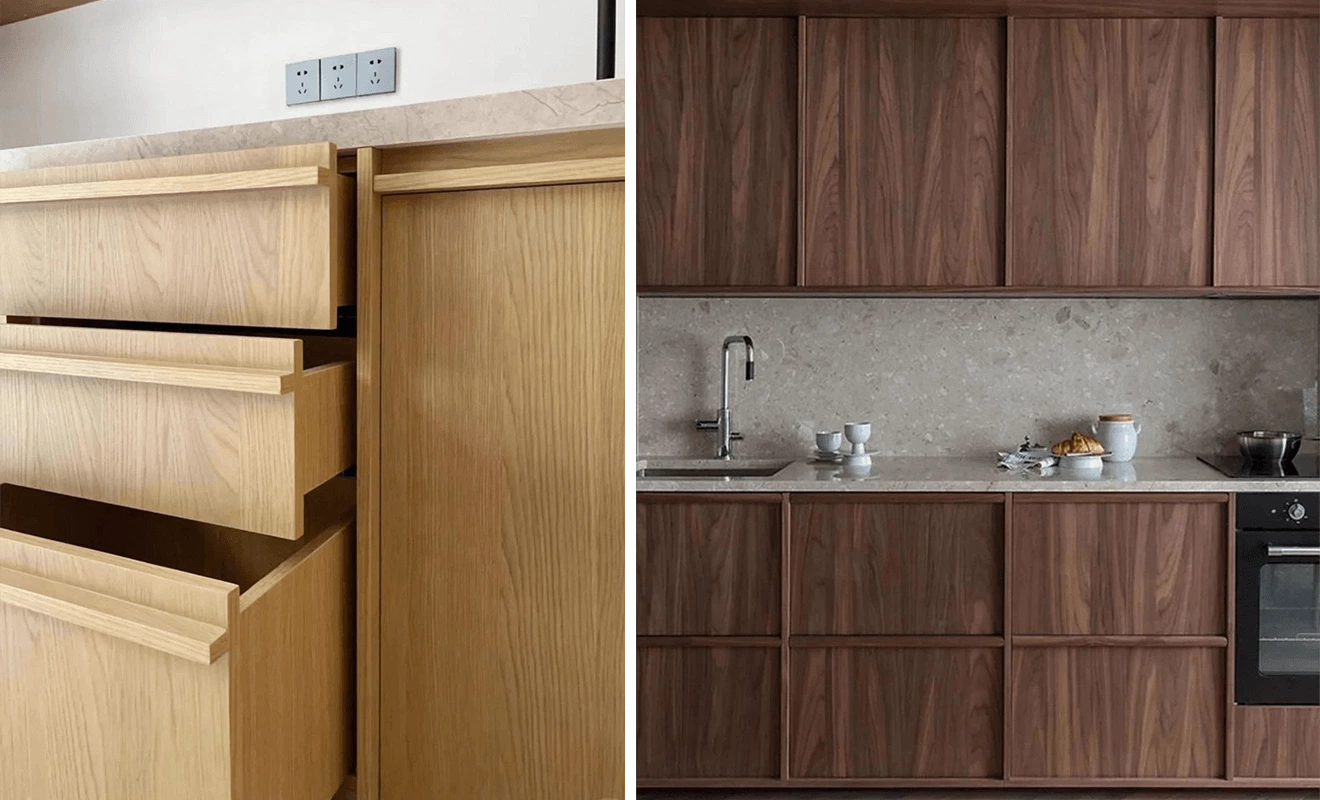
Wall-Mounted Technique
The wall-mounted technique employs embedded or connecting elements to create the illusion of floating shelves. Currently, narrow and thin-edged shelves are prevalent, showcasing a minimalist design language. This method not only maximizes space but also contributes to a clean, uncluttered look.
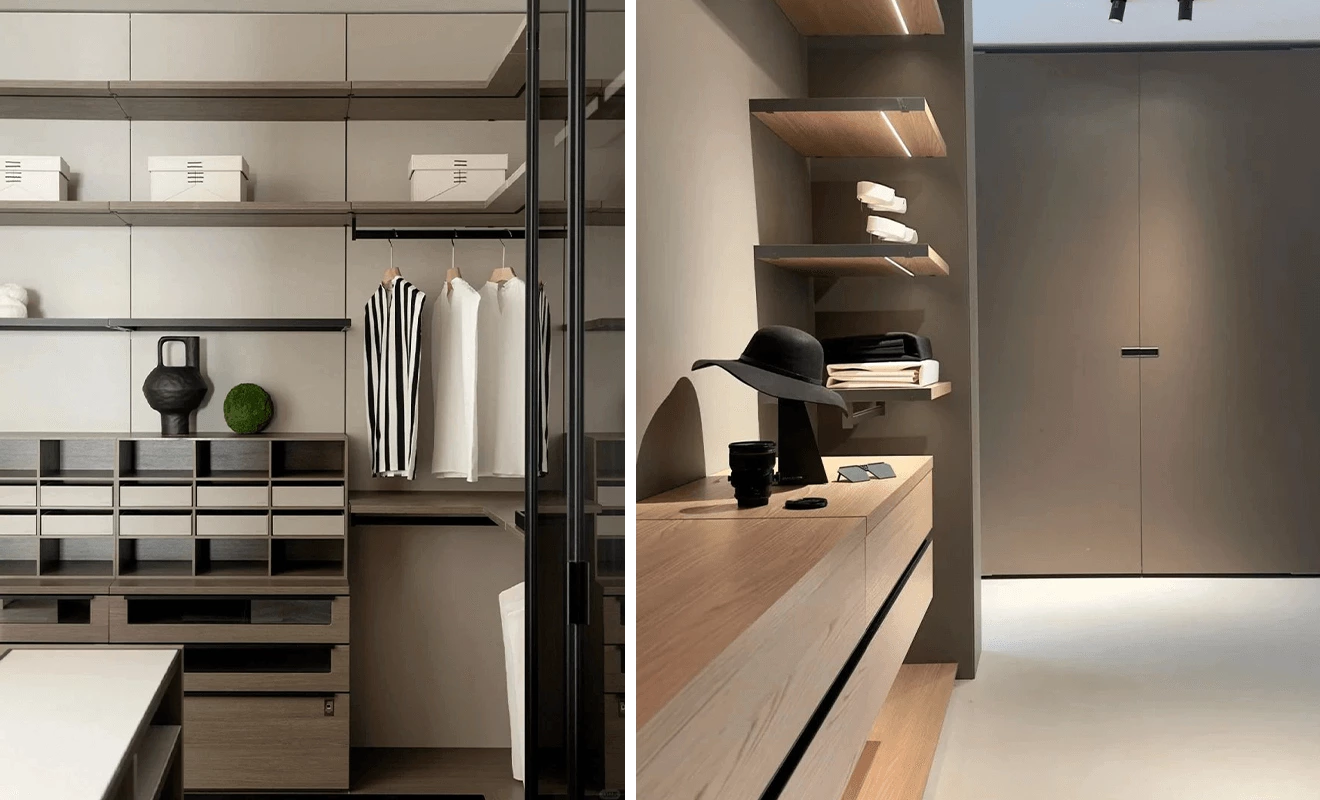
Cantilever Technique
The cantilever technique is a woodworking structure that achieves a floating effect through suspension or overhanging elements. This method creates a visually striking impression, offering a sense of "anti-gravity" that captivates the viewer. It is often used to produce dramatic visual impacts in modern design.
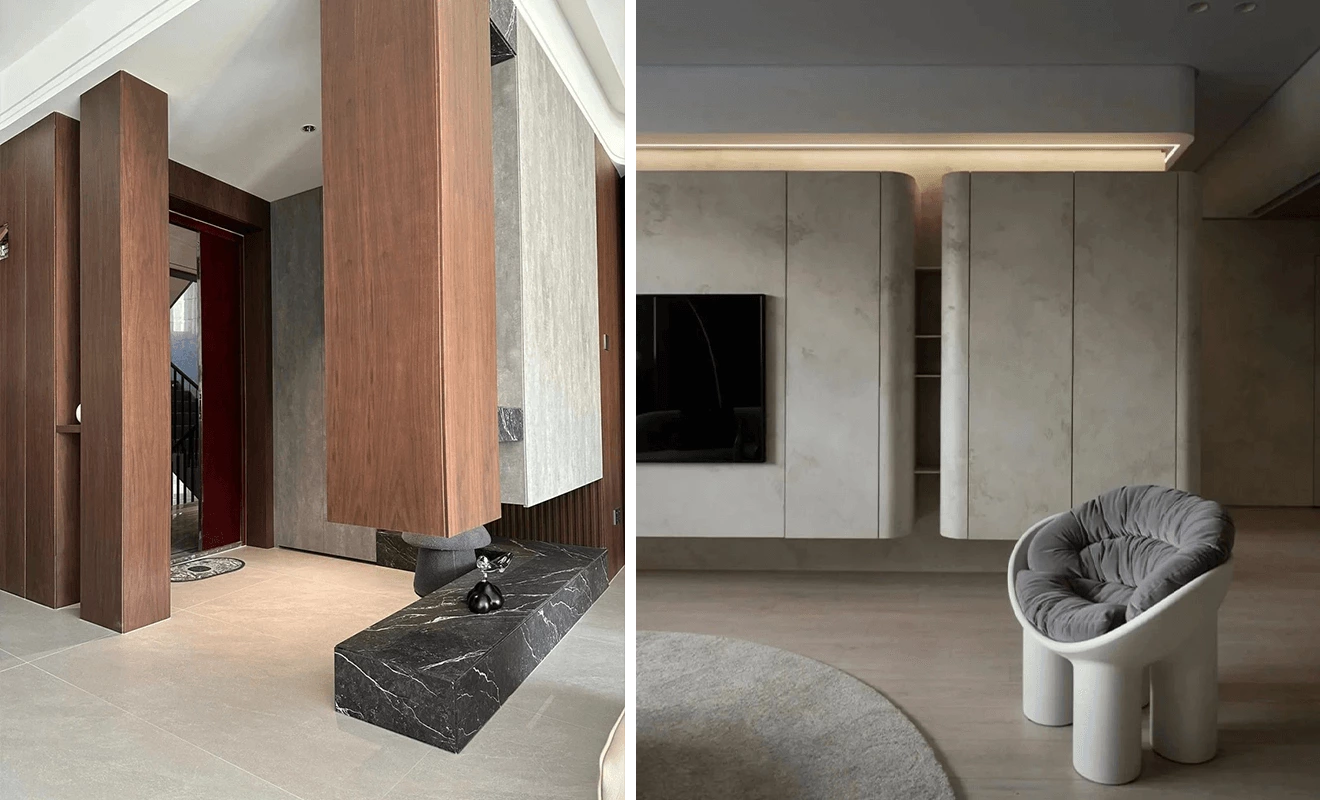
Sandwich Technique
Also known as the ABA technique, the sandwich technique involves layering boards of different thicknesses to create a structure reminiscent of a sandwich. This method enhances the load-bearing capacity of the structure and allows for either recessed or protruding elements. It is widely used in the design of display cabinets, bookshelves, and tabletops, providing both strength and visual interest.
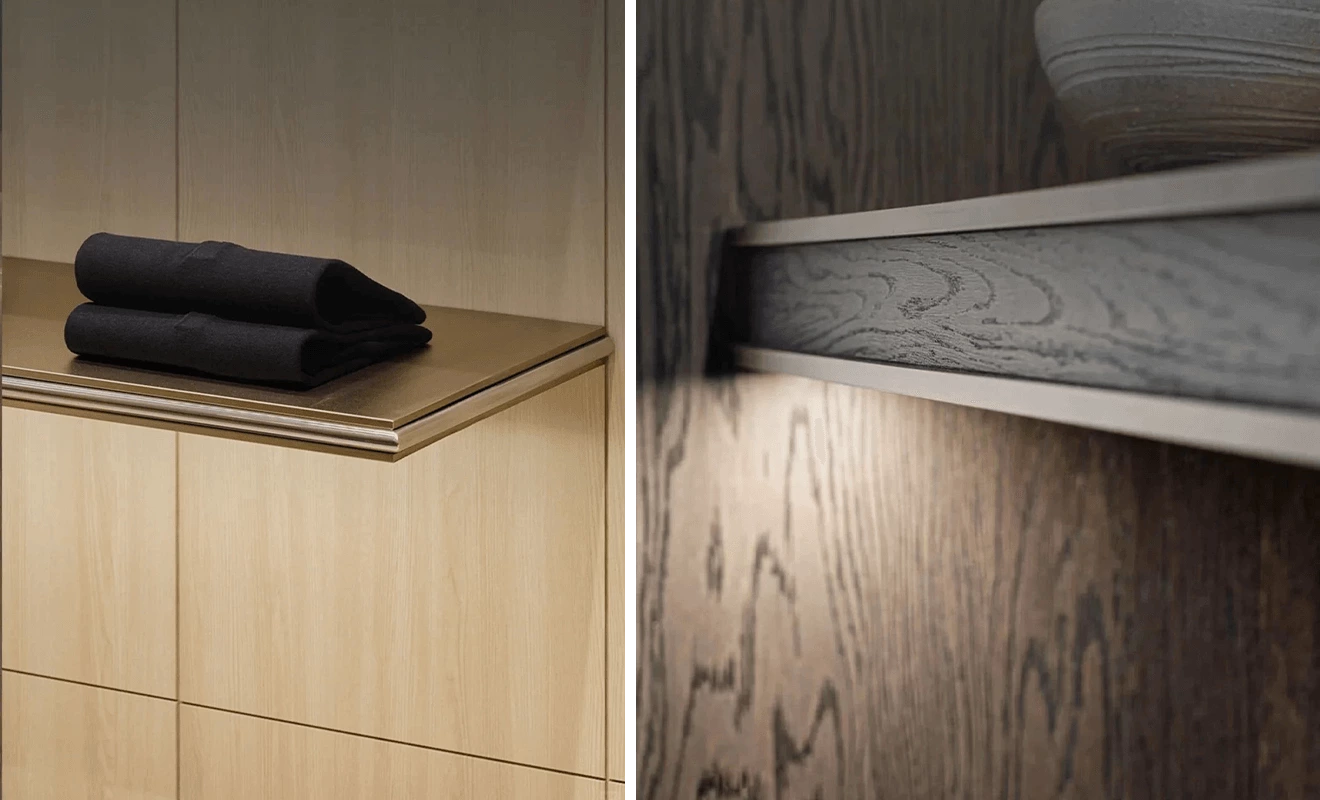
Interlocking Technique
The interlocking technique encompasses the integration of different shapes and materials. Common applications include vertical and horizontal splicing, as well as the interpenetration of various colors and materials. This technique is frequently employed in cabinet design to create a dynamic and interconnected aesthetic.
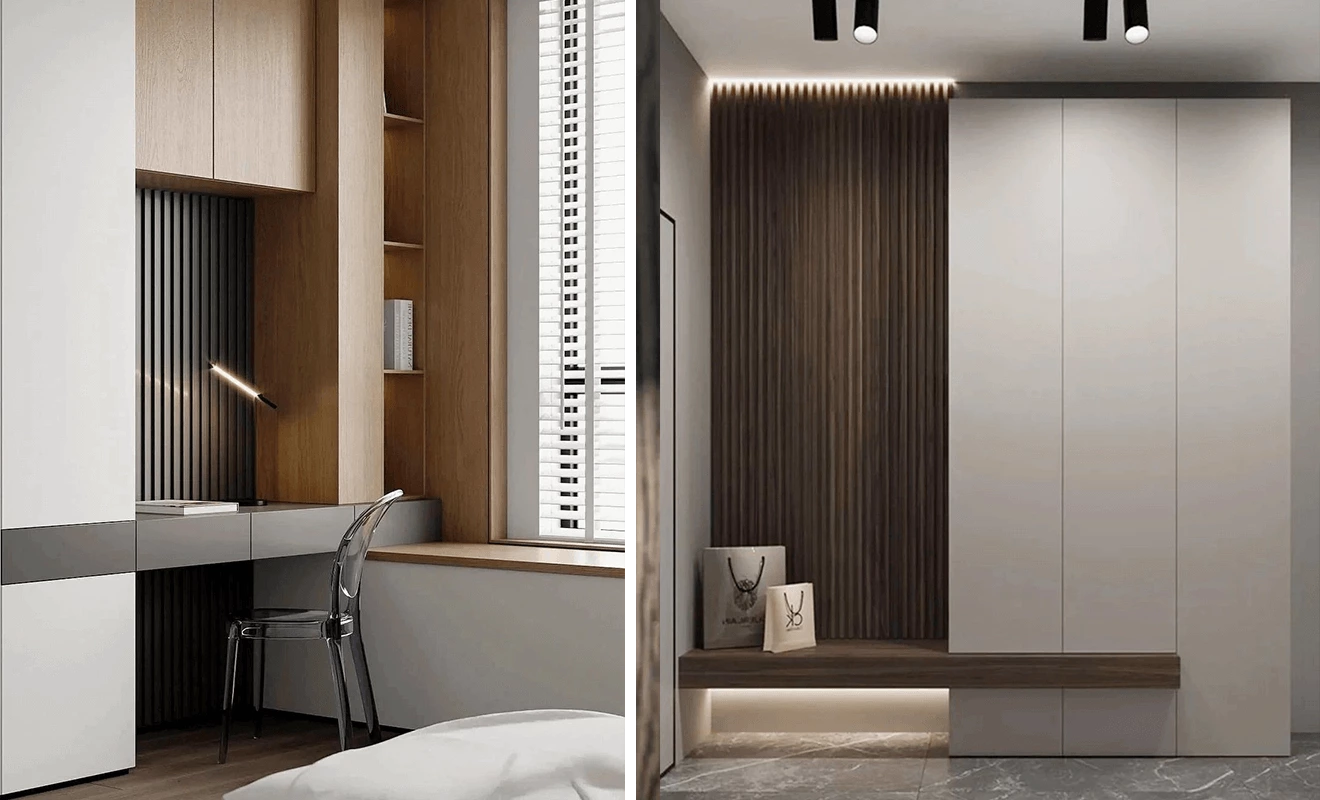
Clamping and Hanging Technique
The clamping and hanging technique disrupts conventional planar arrangements by utilizing different materials or blocks to create a sense of depth and complexity. This method is used to craft intricate visual layers and establish new focal points within a space, enriching the overall design.
